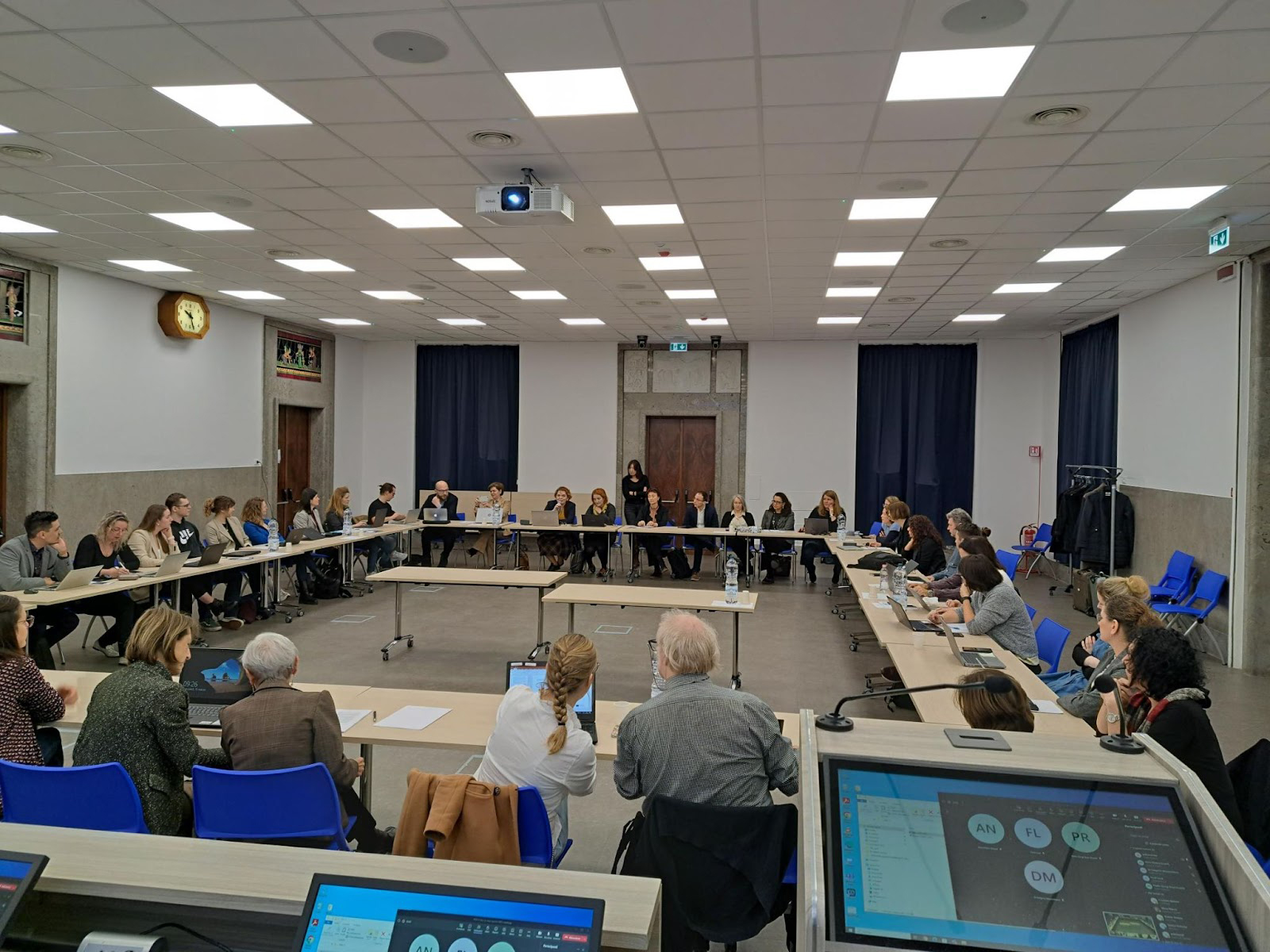The new EU Joint Action on HPV vaccination is part of the Europe Beating Cancer Plan and will support the goal of vaccinating 90% of adolescent girls, as well as improving vaccination among boys.
Known as PERCH (PartnERship to Contrast HPV), the collaboration runs to 2025 and is led by Italy’s National Institute of Health, Instituto Superiore di Sanità (ISS). It could help Europe meet the WHO targets for cervical cancer elimination, while also driving down cases of genital warts.
Highlights
- 18 countries have joined the EU Joint Action on HPV Vaccination (PERCH)
- The initiative supports the goal of vaccinating at least 90% of girls against HPV
- Several countries are working to improve vaccination rates among boys
- PERCH will advance training, data monitoring and awareness of cancer-preventing HPV vaccines
In an interview with Vaccines Today, Raffaella Bucciardini of Italy’s ISS said the main objectives will be to improve countries’ capacity to plan and implement HPV vaccination campaigns by sharing knowledge and experience. PERCH will also improve awareness of HPV-related diseases among girls and boys; improve healthcare professionals’ abilities to communicate about HPV vaccination; and boost data and monitoring systems on HPV vaccination and cervical screening.
Interview with Raffaella Bucciardini, National Centre for Global Health, ISS, Italy.
How will PERCH increase public awareness and training for healthcare professionals?
Several studies from Europe show that healthcare professionals are the most important and reliable source of information on the effectiveness and safety of vaccines, and may increase confidence in HPV vaccination among teenagers and their parents. Efforts to address HPV vaccine hesitancy in the population will be effective if healthcare professionals are aware of the benefits of HPV vaccines and recommend them to their patients.

PERCH will provide healthcare professionals with specific training courses on the benefits and risks for primary and secondary prevention. This will improve their ability to communicate with adolescents, parents, patients and healthcare professionals.
The first step is to collect information on national needs and then select the health professionals to be trained. The second phase focuses on the development of training course materials and the recruitment of training personnel. Finally, the implementation of the training course will follow. Synergies with existing HPV vaccine training activities are being explored, such as training organised by the European Center for Disease Prevention and Control (ECDC).
Why is it important to vaccinate boys as well as girls?
The vaccine is also effective for boys. Males who contract an HPV infection can develop anogenital warts as well as penile, anal and oropharyngeal cancer. Furthermore, vaccinating girls protects heterosexual males from sexual transmission of the virus, but not homosexual ones.
If it is important, why do some countries not vaccinate boys?
According to the World Health Organization (WHO), adolescent boys should also be vaccinated. The Food and Drug Administration (FDA) [in the United States] considers it appropriate to vaccinate males aged 13 to 21 (extending the maximum age of vaccination to 26 for homosexual males). The main doubts about the extension of vaccination to males are related to the cost-effectiveness of this intervention.
Several studies conclude that although extending vaccination to boys may be beneficial for both sexes, such an action does not appear to be cost-effective. Homosexual males, who are more likely than the general male population to develop HPV-related ano-genital cancer, have a greater individual benefit from this vaccination than the general male population and could benefit from targeted HPV vaccination campaigns.

How important is it to improve data collection on vaccine uptake and rates of disease? Do we know HPV vaccination rates across the EU?
The availability of data on HPV vaccination, HPV screening and cancer incidence and mortality ‒ and the linkage between them ‒ are essential for monitoring the process and impact of vaccination. Unfortunately, there is a huge heterogeneity between countries and within countries with respect to the availability of data, methods of collection and monitoring.
What can be done about this?
The following actions need to be urgently addressed: increase HPV vaccine coverage in all European countries to reach 90% HPV vaccination among girls before the age of 15 years; have a common data collection system to improve the monitoring of population coverage and process indicators as well as the impact of HPV vaccination; have population-based registers containing individual records regarding HPV vaccination to be linked to cervical cancer screening and pathology/cancer registries; update knowledge on safety, efficacy and effectiveness of HPV vaccines in general, and of effectiveness of one dose of HPV vaccine in particular.

What is the role of PERCH?
PERCH includes an ambitious plan to assess current implementation of HPV vaccination with a high level of detail, including precise estimates of HPV vaccination coverage (by calendar year, birth cohort and 1-year age group, geographical area and, if possible, also social category), identification of good examples of strategies to increase HPV vaccination coverage, and recognition of barriers in access and acceptance of HPV vaccines.
Moreover, PERCH will provide templates for data collection to measure process (coverage) and impact indicators with explicit attention for inter- and intra-country inequalities, catalyse transfer of knowledge and experience towards countries with moderate to poor level of implementation. In addition, PERCH aims at accelerating the establishment of data linkage between HPV vaccination and cervical cancer screening.
There are differences in HPV vaccine policy across the EU (and in rates of HPV-related cancers). How will PERCH close the gaps and increase equity?
The variation observed in HPV vaccination coverage between countries and within countries signals the presence of inequalities in access to, and information on, vaccines. Understanding and addressing the determinants of these inequalities is a key to increasing overall HPV vaccination coverage and to ensure greater equity in health outcomes such as reducing HPV-related cancers.

PERCH aims at contributing to European efforts to improve HPV vaccination coverage among girls, and preferentially also boys, by analysing the context of how HPV vaccination is implemented and monitored in all participating countries, and how this relates to cervical cancer screening in order to allow for a more detailed needs analysis.
We will analyse determinants of HPV vaccination hesitancy, develop training activities for healthcare personnel on HPV vaccination communication; share good practices among participant countries; activate a strong stakeholder network that includes national public health institutions, European health networks, policy decision makers, professional societies, media and civil society who influence national immunisation policy and practice; and launch awareness campaigns.
While PERCH runs until 2025, the WHO and Europe Beating Cancer goals include 2030 targets. With this in mind, the PERCH Joint Action has developed a range of short, medium and long-term aims.
Short-term outcomes (by April 2025)
- Improve information on how HPV vaccination is implemented and monitored.
- Strengthen awareness of political authorities on the main gaps in planning and monitoring of HPV vaccination and screening.
- Strengthen awareness on the benefits of HPV vaccination by target groups.
- Improve knowledge of health professionals on vaccine benefits, and health professionals’ ability to communicate with parents, adolescents, patients and health professionals.
- Strengthen national and international stakeholder networks.
- Share experience and knowledge on HPV vaccine procurement to empower countries to obtain vaccines at the cheapest possible price.
- Increase HPV vaccine coverage in a number of targeted European countries.
Medium-term outcomes
- Increase HPV vaccine coverage in European countries.
- Improve data and monitoring in European countries.
- Put in place population-based registries to track HPV vaccination, cervical cancer screening and cancer incidence and mortality data in European countries.
- By 2030, reach 90% HPV vaccination among girls before they reach the age of 15 in all Member States (and for boys in those countries targeting amales in their HPV vaccination programme).
Long-term outcomes
- Reduce the incidence of cervical cancer at European level to <4/100,000/year.
- Reduce the incidence of all HPV-related cancers and associated mortality at European level.



